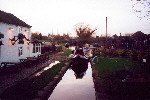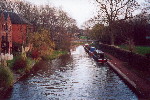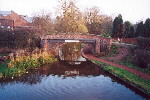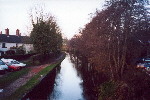| The
Trent and Mersey (Grand Trunk) canal
The idea of this canal was to join the Mersey to the Thames and then another canal would join the Trent to the Severn. These joins would create a link between the four major ports of London, Liverpool, Bristol and Hull and form a 'Grand Cross'. Brindley had also planned other branches to Manchester, Birmingham, Coventry and Derby. Brindley had done a survey in 1758 for a canal for Earl Gower and Lord Anson but it proved to be too expensive and unfeasible to build. However, due to the success of the Worsley to Manchester section of the Bridgewater Canal and its realignment to join with the proposed Grand Trunk Canal which would give the Bridgewater canal access to the Potteries, Hull, London and Bristol, the Duke of Bridgewater backed up the revived proposals. Josiah Wedgwood also knew Brindley and was aware of his great talent. Wedgwood was in favour of the proposed Grand Trunk Canal because transporting his products to his customers was a slow process by horse and cart and often resulted in breakages. Similarly, obtaining his raw materials such as flint from south-east England and china clay from Cornwall was a slow and expensive process. This meant that this canal would offer Wedgwood great advantages in the area of transportation. He promised one thousand pounds for starting costs for the canal and also invested in a large number of its shares. Despite rival schemes being proposed, the Grand Trunk Canal prevailed and Wedgwood cut the first sod of the canal at Brownhills near Tunstall on the 26th July 1766. Brindley predicted that the whole canal would be complete by the end of 1772 but there were added complications in the form of Harecastle Hill. Brindley decided that the best route was to go through the hill and to therefore construct a tunnel. This proved to be a very difficult and time-consuming process. The Staffordshire and Worcestershire Canal Act was passed at the same time as the Trent and Mersey Canal act - on the 14th May 1766 - and was completed by May 1772. A stretch of the Trent and Mersey from Wilden Ferry on the Trent to Stoke had also been completed at this time, which meant that Brindley saw two arms of his Grand Cross scheme completed before his death, linking the Potteries with the major ports of Bristol and Hull. The Trent and Mersey was completed and opened in 1777, five years after the completion date that Brindley had predicted and also five years after his death.
|



